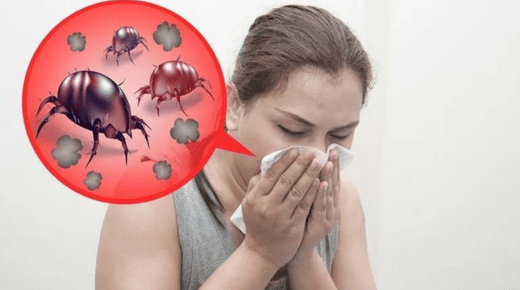Dust Allergy Treatment at Home – A Comprehensive Guide
1. Introduction to Dust Allergies
Dust allergies are a common problem affecting many people worldwide. They are caused by tiny particles in dust, including pollen, mold spores, dust mites, and pet dander. Symptoms include sneezing, runny nose, itchy eyes, and coughing.
2. Identifying Dust Allergy Symptoms
Common symptoms of dust allergies include sneezing, itchy and watery eyes, runny or stuffy nose, and coughing. Some people may also experience wheezing, shortness of breath, or skin rashes. Recognizing these symptoms is the first step towards effective treatment.
3. Keeping Your Home Clean
Regular cleaning is essential to reduce dust and minimize allergy symptoms. Dust surfaces with a damp cloth, vacuum carpets and upholstery frequently, and wash bedding in hot water weekly to remove dust mites and allergens.
4. Using Air Purifiers
Air purifiers with HEPA filters can help reduce dust particles in your home. These devices trap airborne allergens, improving indoor air quality and reducing allergy symptoms. Place air purifiers in commonly used rooms for best results.
5. Maintaining Humidity Levels
Dust mites thrive in humid environments. Keeping indoor humidity levels between 30-50% can help reduce their population. Use dehumidifiers and air conditioners to control humidity and prevent dust mite growth.
6. Choosing the Right Bedding
Opt for allergen-proof bed covers and pillowcases to protect against dust mites. Wash all bedding in hot water weekly and consider using hypoallergenic pillows and mattresses to reduce allergen exposure.
7. Regularly Washing Soft Furnishings
Soft furnishings like curtains, cushions, and rugs can harbor dust and allergens. Regularly wash these items in hot water to remove dust mites and other allergens, helping to keep your home clean and allergy-free.
8. Reducing Clutter
Cluttered areas collect dust and are harder to clean. Minimize clutter in your home by organizing and storing items in closed containers. This makes cleaning easier and reduces the places where dust can accumulate.
9. Using Allergy-Friendly Cleaning Products
Choose cleaning products that are free from harsh chemicals and fragrances, as these can aggravate allergy symptoms. Look for products labeled as hypoallergenic or designed for sensitive skin to reduce irritation.
10. Vacuuming with a HEPA Filter
Use a vacuum cleaner with a HEPA filter to effectively capture dust and allergens from floors and upholstery. Regular vacuuming, at least twice a week, can significantly reduce the amount of dust in your home.
11. Keeping Pets Clean
Pet dander is a common allergen. Regularly bathe and groom your pets to reduce dander in your home. Keep pets out of bedrooms and off furniture to minimize exposure to allergens.
12. Installing Allergen-Proof Flooring
Consider replacing carpets with hard flooring options like wood, tile, or laminate. These materials do not trap dust and are easier to clean, helping to reduce allergen buildup in your home.
13. Using Window Treatments
Heavy curtains can trap dust and allergens. Opt for washable curtains or blinds that can be easily cleaned. Regularly wash or wipe down window treatments to prevent dust accumulation.
14. Creating a Dust-Free Bedroom
Since you spend a significant amount of time in your bedroom, it’s important to keep it as dust-free as possible. Use allergen-proof covers, wash bedding frequently, and keep pets out of the bedroom to minimize dust exposure.
15. Managing Outdoor Allergens
Keep windows and doors closed during high pollen seasons to prevent outdoor allergens from entering your home. Use air conditioning instead of opening windows to keep your home cool and allergen-free.
16. Wearing a Mask While Cleaning
Wearing a mask while cleaning can prevent inhaling dust and allergens. This is especially important when dusting, vacuuming, or changing bedding, as these activities can stir up allergens.
17. Using Essential Oils
Certain essential oils, like eucalyptus and tea tree oil, have natural anti-inflammatory and antibacterial properties. Use a diffuser to disperse these oils in your home or add a few drops to your cleaning water to help reduce allergens.
18. Implementing a No-Shoes Policy
Shoes can track in dust, pollen, and other allergens from outside. Implement a no-shoes policy in your home to reduce the amount of dust and allergens that are brought inside.
19. Washing Hands and Face Regularly
Regularly washing your hands and face can help remove allergens that you may have come into contact with during the day. This simple habit can reduce the transfer of dust and other allergens to your eyes, nose, and mouth.
20. Using Anti-Allergy Bedding Covers
Anti-allergy bedding covers create a barrier against dust mites and allergens. Use these covers on mattresses, pillows, and duvets to prevent allergens from accumulating in your bedding.
21. Cleaning Air Ducts and Vents
Air ducts and vents can collect dust and distribute allergens throughout your home. Have your air ducts professionally cleaned and regularly change air filters to maintain clean air circulation.
22. Maintaining a Healthy Diet
A healthy diet can boost your immune system and reduce allergy symptoms. Include foods rich in vitamins, minerals, and antioxidants, and stay hydrated to help your body fight off allergens more effectively.
23. Using Nasal Rinses
Nasal rinses can help clear out allergens from your nasal passages, reducing congestion and irritation. Use a saline solution with a neti pot or nasal spray to flush out allergens and soothe your sinuses.
24. Consulting with an Allergist
If home treatments are not enough to manage your dust allergies, consult with an allergist. They can provide personalized advice, prescribe medications, or recommend allergy shots (immunotherapy) to help manage your symptoms.
25. Conclusion: Managing Dust Allergies at Home
Managing dust allergies involves a combination of cleaning practices, reducing allergen exposure, and using appropriate treatments. By following these home remedies and lifestyle changes, you can effectively reduce dust allergy symptoms and improve your quality of life.

